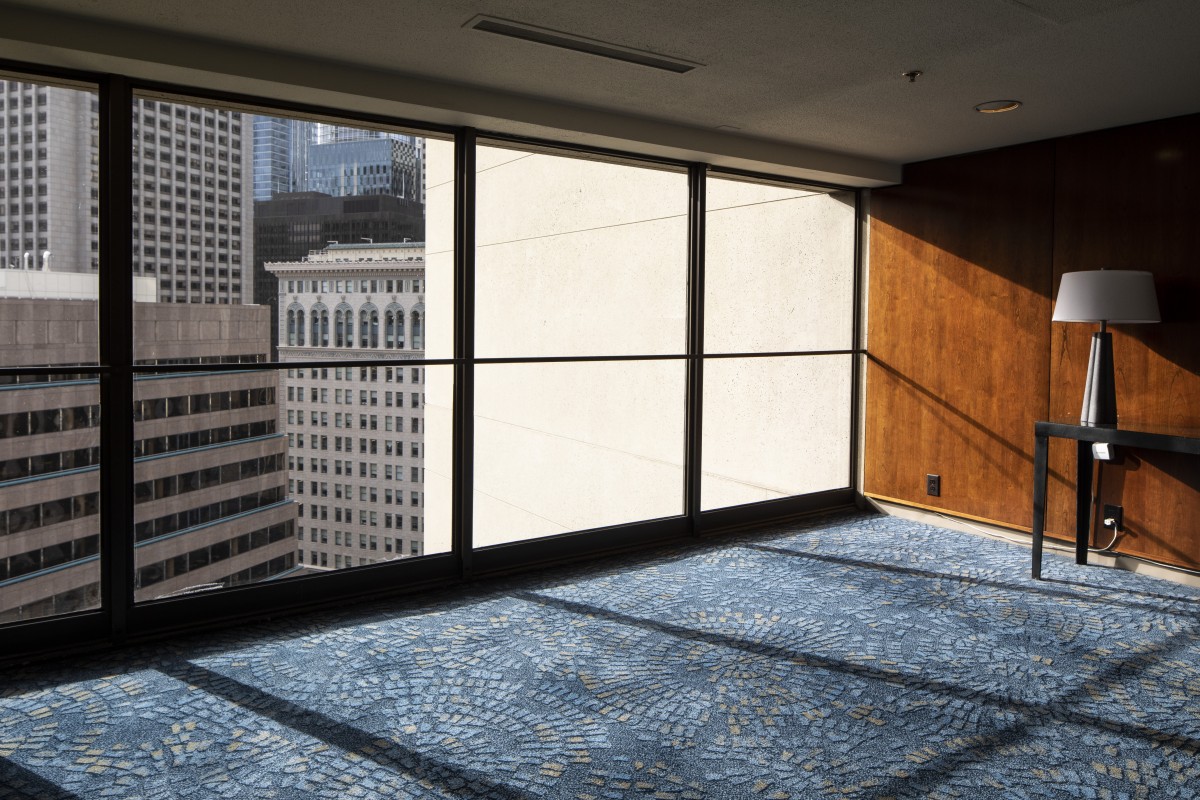Talking tuft
A plush new exhibition at the Canadian Centre of Architecture is pulling the rug out from under those who would dismiss carpeting as incidental to design.

Interior of Hyatt Regency O'Hare, Chicago, Illinois Photograph Assaf Evron, 2019. © Assaf Evron
In this era of engineered hardwood, reclaimed barn board and polished concrete, carpeting – despite its soft touch - doesn’t seem to get the attention it deserves. Which, as a new exhibition at the Canadian Centre of Architecture is quick to point out, is a huge oversight. Why? Because chances are the carpeting you see every day — in some of our most iconic public spaces, including offices, hotels and casinos — was designed to make you act a certain way. No mere aesthetic happenstance, these floors are telling you something.
Highlighting the often-incongruent aspirations of architects, builders, manufacturers and users, the exhibition The Design of Carpets That Design Us brings to life (through photographs, case histories, archival images and short films) the many ways carpets perform in architecture. We reached out to exhibition curator Dan Handel to find out more about why carpeting has been overlooked and why the lobby of the Ritz Carlton in Toronto shouldn’t be missed.
AGOinsider: This exhibition considers carpeting in a certain kind of post-war building. What differentiates carpet from the flooring that came before it?
Handel: In general, the type of industrial carpets shown in this exhibition evolved in the 1950s and 1960s following innovations in fibre engineering, tufting or weaving machinery and printing technology, which made it cheaper and more durable than other flooring solutions. However, the exhibition looks at a moment in which these innovations meet an economic system and a type of buildings that emerge from the late 1960s onwards: profit-oriented, immense gaming and hospitality spaces, in which carpets play many roles: from moving people around as efficiently as possible to disorienting those who need to be held captive and spend more money.
AGOinsider: This exhibition highlights a fascinating disconnect between carpet manufacturers and architects. What are the two questions every architect should ask the carpeting designer?
Handel: Indeed, in most cases architects, including the most well-known and powerful ones, do not design the carpets in their buildings. The first question I would ask as an architect would be ‘What is possible?’, and from that I would proceed to ‘How do we work together?’, because as some examples we feature in the exhibition demonstrate, when architects did stop to seriously consider carpets in their buildings and collaborate with producers, they were able to determine a desired atmosphere or reinforce their architectural concepts.
AGOInsider: Is there a particular instance of carpeting use in Canada that is really good – meaning both its commercial effectiveness and its support of the architecture?
Handel: Fallsview Casino Resort in Niagara Falls provides a standard, yet effective, example of the maze philosophy in casino design: meandering paths and obtrusive patterns that work on your psyche to get you into the zone. I would also suggest seeing the carpets at the Ritz Carlton in Toronto, which are extreme examples of figural landscapes translated into carpet space.
AGOinsider: Ralitsa Doncheva is the cinematographer attached to the exhibition. Why did you want audiences to see spaces on film? And not as static photographs?
Handel: The exhibition features photographs by artist Assaf Evron which document specific carpet spaces. What we wanted to achieve with Ralitsa is a more atmospheric and poetic layer of narration. In each of the four films we feature, an object speaks in the first person in order to highlight the complexities of each of the parties involved in designing the carpet: architects, industry, brands, and users. The films are shown on separate screens, one of which lights up while the others await their turn, which lends the exhibition a theatrical feeling, reinforcing the distinct stories that coexist in the same space.
The Design of Carpets That Design Us is on view at the Canadian Centre for Architecture until February 20, 2022. For more art news from Toronto and around the world, be sure to subscribe to AGOinsider.


